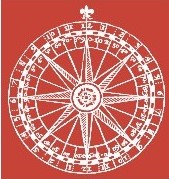On Dark Laughter: Leopardi’s and Beckett’s Humour
The desire not to desire is crucial to Samuel Beckett and Giacomo Leopardi. Beckett explores this theme in Proust where Leopardi’s poem “A Se Stesso” is thrice quoted. Before citing this poem, Beckett catalogues Leopardi as one of the philosophers…
Listed in Article | publication by group Iter Community
Version 1.0 - published on 13 Sep 2025
Licensed under Creative Commons BY-NC 4.0
Description
The desire not to desire is crucial to Samuel Beckett and Giacomo Leopardi. Beckett explores this theme in Proust where Leopardi’s poem “A Se Stesso” is thrice quoted. Before citing this poem, Beckett catalogues Leopardi as one of the philosophers who proposed the only impossible solution—the removal of desire—to living. Leopardi expresses the desire of not desiring in his posthumously-collected Manuale di Filosofia Pratica. There is thus a fundamental common terrain in Leopardi’s and Beckett’s existential enquiry. This apparently negative and pessimistic outlook in both authors is a leading thread that has received critical attention. My contention, nonetheless, is that while both Leopardi and Beckett aspire to the ablation of desire, the two authors are neither nihilists nor pessimists. It is through their humour that both Leopardi and Beckett introduce a paradoxical in-between space for desire. The humorous moment conceals repressed desire, albeit it also strives to allow that same characteristic of human fallibility- desire- to be manifested. It is in this dual act that humour in Leopardi and Beckett is inextricably linked to something unsettling, grimacing but also potentially liberating.
Cite this work
Researchers should cite this work as follows:
Tags
Notes
Original publication: Cauchi-Santoro, Roberta. "On Dark Laughter: Leopardi’s and Beckett’s Humour." Quaderni d'italianistica 33 (2): 2013. 119-131. DOI: 10.33137/q.i..v33i2.19420. This material has been re-published in an unmodified form on the Canadian HSS Commons with the permission of Iter Canada / Quaderni d'italianistica. Copyright © the author(s). Their work is distributed by Quaderni d'italianistica under a Creative Commons Attribution-NonCommercial 4.0 International License. For details, see https://creativecommons.org/licenses/.
Publication preview
Iter Community
This publication belongs to the Iter Community group.
When watching a publication, you will be notified when a new version is released.
